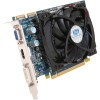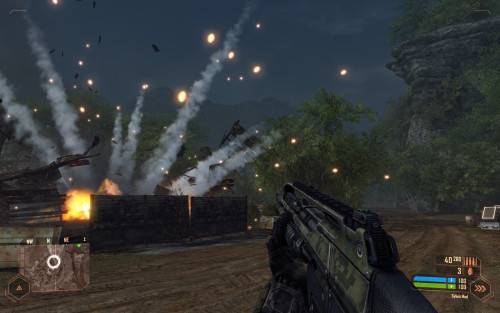- Qualcomm Launches Snapdragon 4 Gen 2 Mobile Platform
- AMD Launches Ryzen PRO 7000 Series Mobile & Desktop Platform
- Intel Launches Sleek Single-Slot Arc Pro A60 Workstation Graphics Card
- NVIDIA Announces Latest Ada Lovelace Additions: GeForce RTX 4060 Ti & RTX 4060
- Maxon Redshift With AMD Radeon GPU Rendering Support Now Available
Sapphire Radeon HD 4670 GDDR4 & HD 4830

Gaming on a budget isn’t as difficult as it once was, thanks to superb offerings from both ATI and NVIDIA that go for a modest price. But, what about the sub-$100 crowd? We’ll find that out here, at least from the ATI side of things, with Sapphire’s HD 4670 GDDR4 and HD 4830. Both feature great efficiency, and believe it or not, great overclocking as well.
Page 4 – Crysis Warhead
As PC enthusiasts, we tend to be drawn to games that offer spectacular graphics… titles that help reaffirm your belief that shelling out lots of cash for that high-end monitor and PC was well worth it. But it’s rare when a game comes along that is so visually-demanding, it’s unable to run fully maxed out on even the highest-end systems on the market. In the case of the original Crysis, it’s easy to see that’s what Crytek was going for.
Funny enough, even though Crysis was released close to a year ago, the game today still has difficulty running at 2560×1600 with full detail settings – and that’s even with overlooking the use of anti-aliasing! Luckily, Warhead is better optimized and will run smoother on almost any GPU, despite looking just as gorgeous as its predecessor, as you can see in the screenshot below.
The game includes four basic profiles to help you adjust the settings based on how good your system is. These include Entry, Mainstream, Gamer and Enthusiast – the latter of which is for the biggest of systems out there, unless you have a sweet graphics card and are only running 1680×1050. We run our tests at the Gamer setting as it’s very demanding on any current GPU and is a proper baseline of the level of detail that hardcore gamers would demand from the game.



Whose cruel idea was it to subject these poor graphics cards to such torture? Well, me of course, but don’t worry – it was I who was crying during the benchmarking run. Crysis at 11.8 FPS? Not fun! We of course didn’t expect to see anything amazing here, especially since even the HD 4870 1GB had a hard time with the game past 1680×1050. But what if we dropped the “Gamer” profile?
|
Graphics Card
|
Best Playable
|
Avg. FPS
|
|
NVIDIA GTX 295 1792MB x 2
|
2560×1600 – Enthusiast, 0xAA
|
42.507 FPS
|
|
NVIDIA GTX 285 1GB x 2
|
2560×1600 – Gamer, 0xAA
|
45.835 FPS
|
|
Zotac GTX 295 1792MB
|
2560×1600 – Gamer, 0xAA
|
37.97 FPS
|
|
Zotac GTX 285 1GB AMP!
|
2560×1600 – Mainstream, 0xAA
|
53.308 FPS
|
|
NVIDIA GTX 285 1GB
|
2560×1600 – Mainstream, 0xAA
|
51.283 FPS
|
|
Palit GTX 280 1GB
|
2560×1600 – Mainstream, 0xAA
|
46.912 FPS
|
|
XFX GTX 260/216 896MB
|
2560×1600 – Mainstream, 0xAA
|
40.750 FPS
|
|
Diamond HD 4870 1GB
|
2560×1600 – Mainstream, 0xAA
|
33.849 FPS
|
|
Palit HD 4870 X2 2GB
|
2560×1600 – Mainstream, 0xAA
|
30.670 FPS
|
|
Sapphire HD 4830 512MB
|
1920×1200 – Mainstream, 0xAA
|
37.051 FPS
|
|
Sapphire HD 4670 512MB
|
1920×1200 – Mainstream, 0xAA
|
25.175 FPS
|
Well, like Call of Duty: World at War, the best we could do in the resolution department was 1920×1200, but even that impresses me quite a bit given the price-point of both of these cards. The HD 4670 came quite close to having to go down yet another notch, but like CoD, the game was surprisingly playable. It’s certainly not ideal, but if someone had to choose between that and moving down to 1680, I’m doubtful they’d choose the latter.
Support our efforts! With ad revenue at an all-time low for written websites, we're relying more than ever on reader support to help us continue putting so much effort into this type of content. You can support us by becoming a Patron, or by using our Amazon shopping affiliate links listed through our articles. Thanks for your support!






